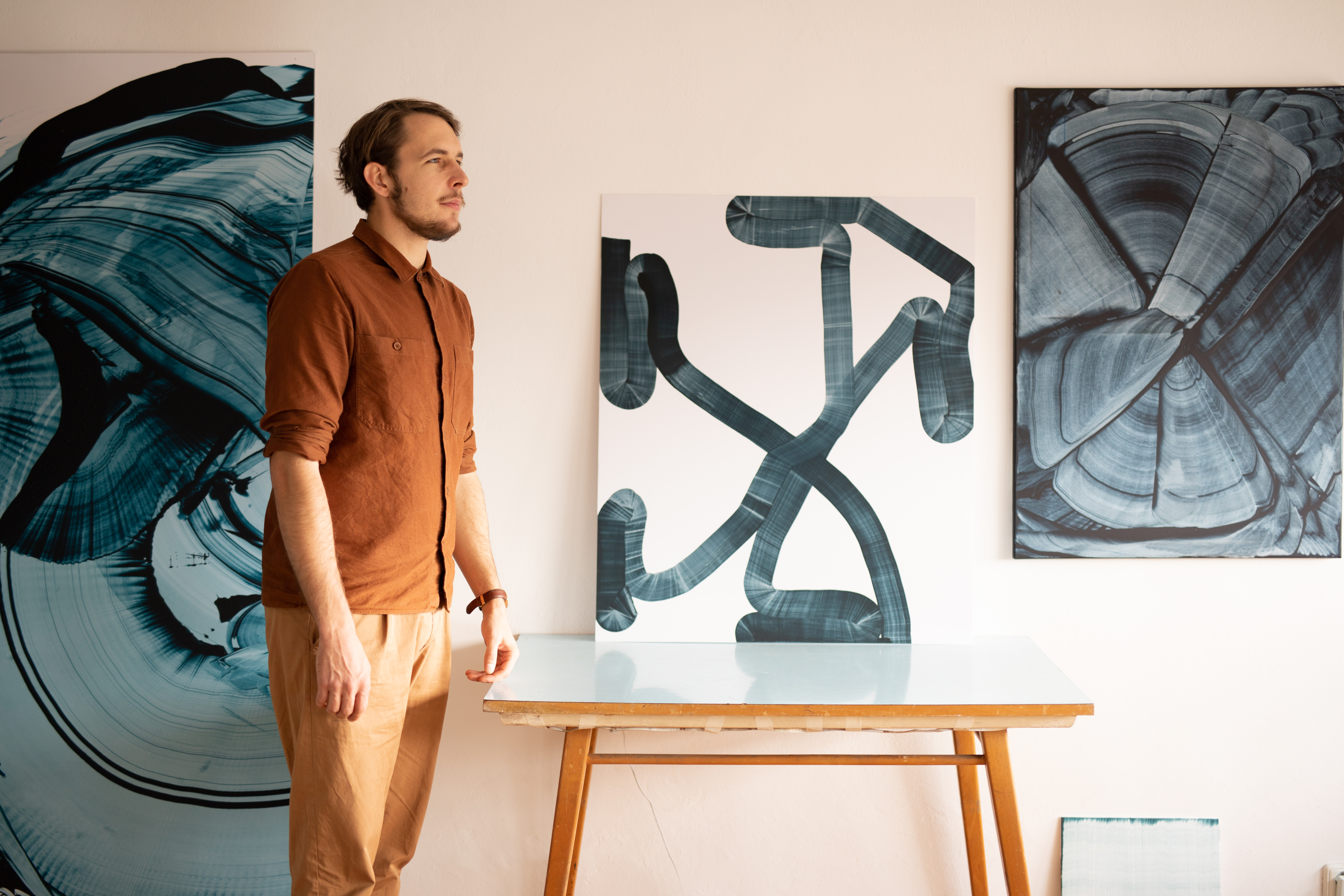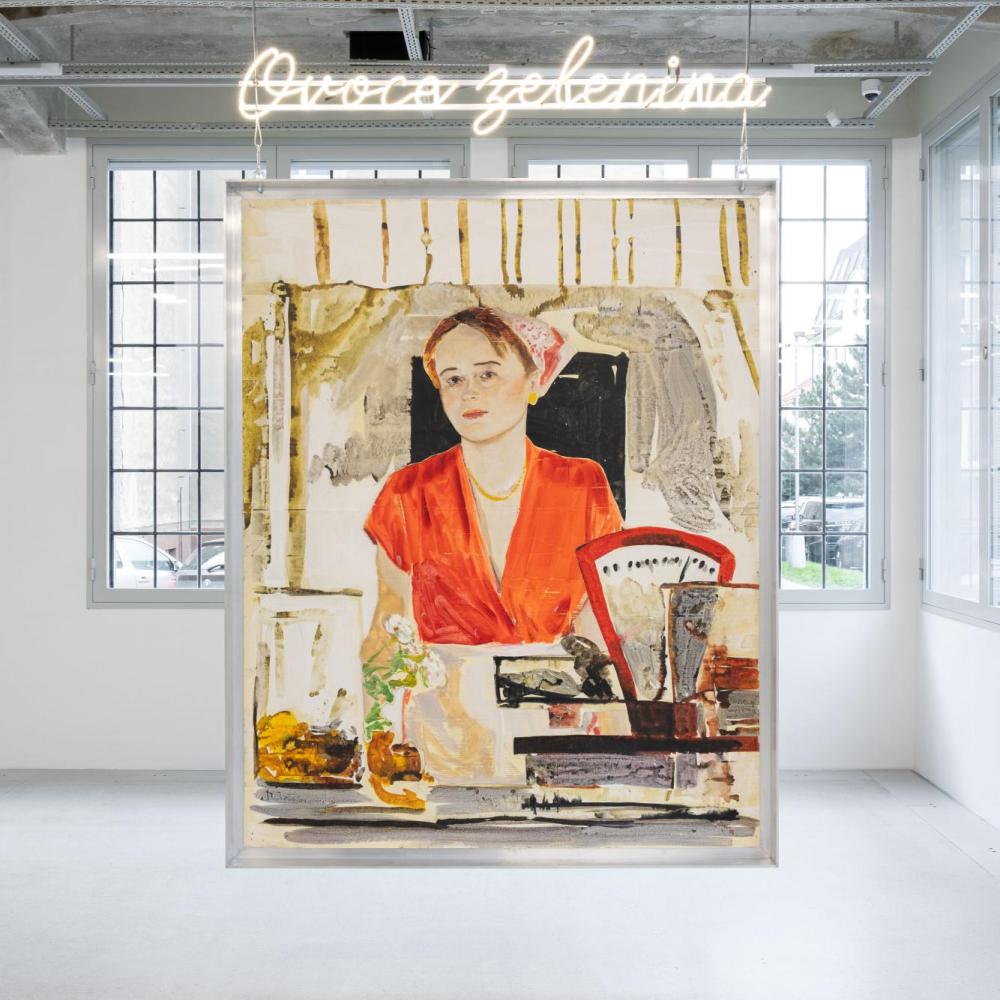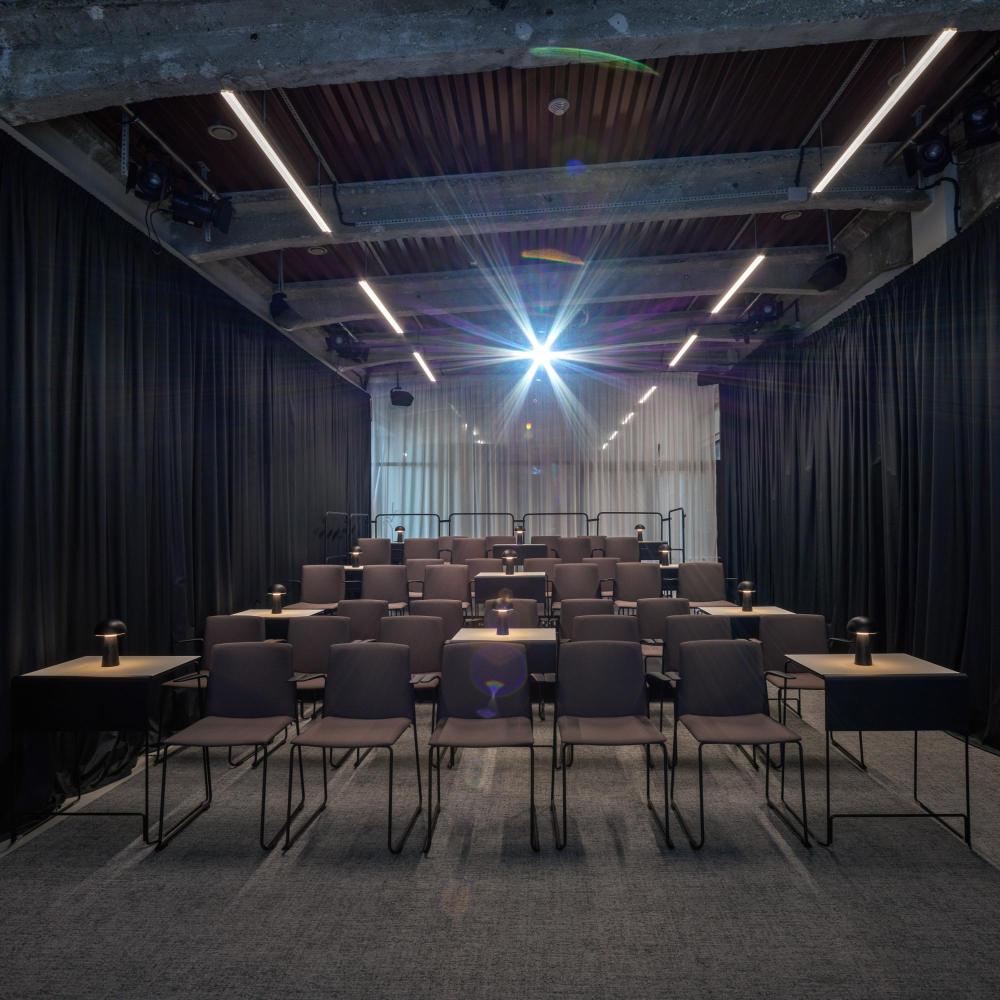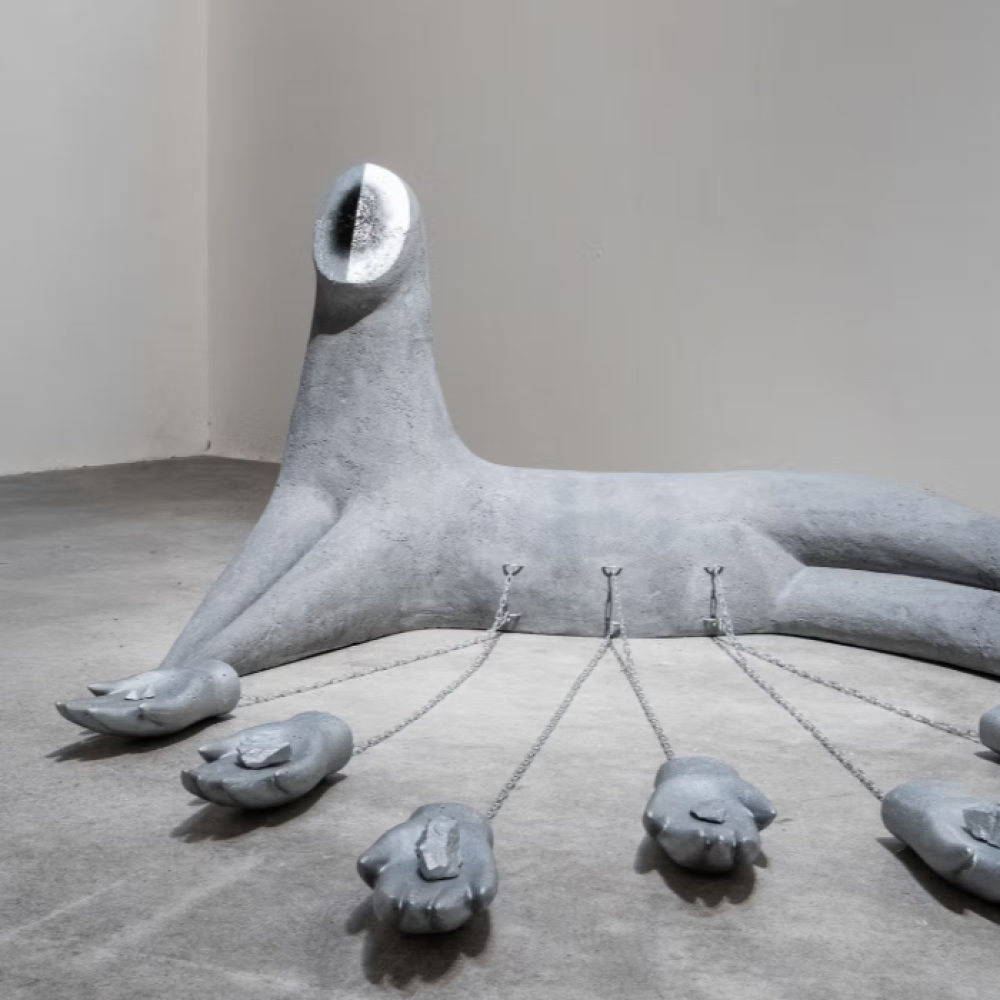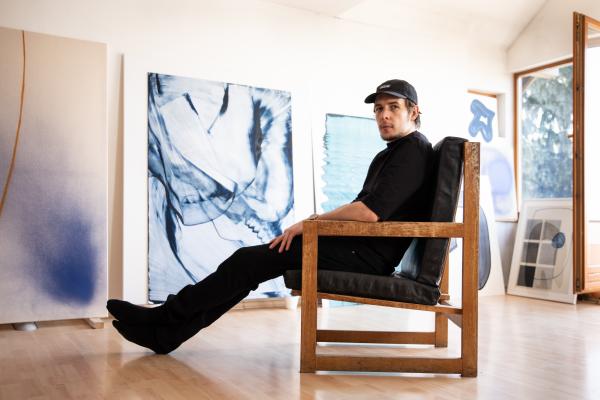
Stanislav Ondruš (*1995) graduated from the Faculty of Arts of the University of Ostrava, Graphic Design Studio under the guidance of Zbyněk Janáček. Subsequently, he completed his master's studies at the Academy of Fine Arts in Bratislava in the Painting III Studio under the guidance of Rastislav Podhorský. In his work he deals with the essence of the present moment in a minimalist treatment of monochromatic painting. Find out more about her motivation, creative process and exhibitions in the interview for the exhibition "Out and Closer" at Telegraph Gallery. Curator Mira Macík will open the opening reception, which will take place in the cinema, on February 3, 2022 at 6:00 p.m.
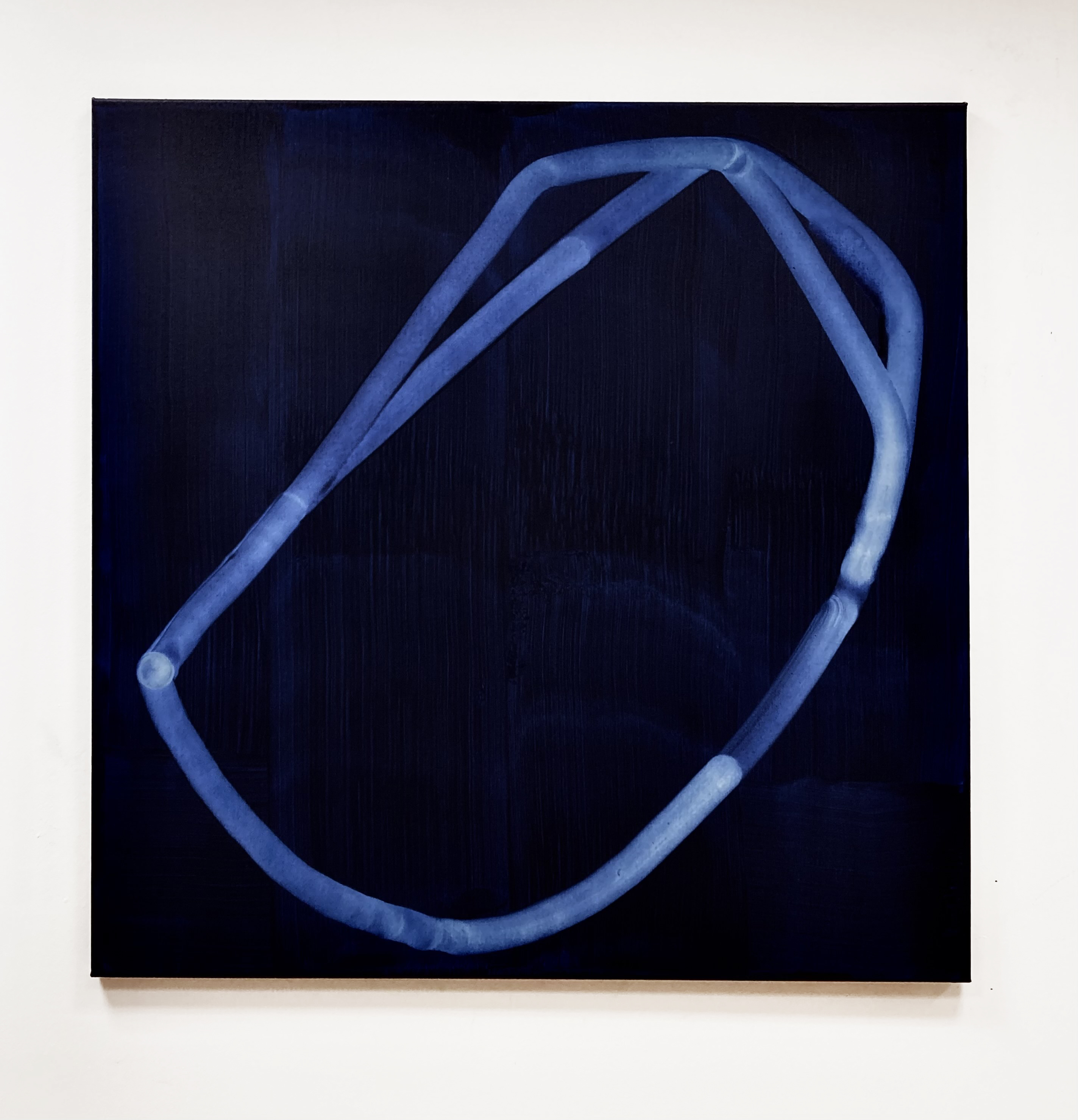
In your work you explore the essence of living in the present moment. How would you describe this aspect in the process of creating a work of art?
This process lies in the technology by which I create the image. It allows me to reflect my movement and stop. When I work with a trowel, brush and other objects, I can trace that movement and stopping of that stroke through the lines and shapes. This creates a situation in which I can experience the moment. And through the moment I can contemplate, it's something visible. Painting and technology allow me to better perceive my own body, my own movement, and so life. In a way, experiencing the present moment can be articulated through the artistic medium of painting in this way. The most essential thing is stopping - as I start a line, I continue, stop and move on. The stopping in my paintings parallels today's accelerated time. This moment gives me a nice symbolism in existence that can be captured in a painting.
Your monochromatic paintings are mainly in blue and green tones. Is the choice of these colours important to you?
I'm sure it is. It's because of the psychological properties of those colours. From a subjective point of view, they are the most meditative, the most profound for me as a painter. They resonate best with this theme of experiencing the present moment. I've also tried several shades, it didn't work as well as with these two shades. It wasn't a coincidence, over time it turned out that blue and green worked best.
You studied at the Faculty of Arts of the University of Ostrava in the Studio of Graphic Arts and spent your master's degree at the Academy of Fine Arts in the Studio of Painting. What led you to change the medium and how did printmaking in painting influence you?
I chose the College of Fine Arts and painting because of the perspective I felt. I didn't want to just stay with the technology of printmaking and drawing. It felt like the right path for me to develop my work. I feel it helped me, if only because of the discomfort of always having to learn something new. It's not easy when one is used to something. The discomfort and learning about new technologies was a shift for me. Also the change of study environment and studio, people thought differently than in Ostrava.
I still say I don't paint, but I draw or do graphics. That work is extremely graphic, there's an awful lot of painting. Even in that monochrome painting, the viewer can see that I'm not doing a classical process. I don't create valers, I don't work with color and variegation. The monochrome in the painting says that I have chosen the most graphic way. In painting I mostly deal with gesture. I consider gesture to be a graphic mannerism, which comes from typography, calligraphy, drawing as such, and more or less all the current works reflect gesture. This is a distinctive graphic feature that has remained with me after studying and making prints.
Do you think all artists should go through different mediums?
Sure. If only for the sake of discomfort and learning something new, for example. One can discover, that's very important. When different mediums interconnect interdisciplinarily, it's rewarding. If an artist has grown up in one medium and is interested in tackling another, it's natural. In a human lifetime, one can do one medium, but you can see in the history of art and artists as a whole that after a certain point they have moved on to other mediums. They found it exhausting in some ways. Then they moved on quite automatically, of course that enriching journey is only good. One finds out very quickly if it's one's thing. If it isn't, he doesn't have to force himself into it.
In addition to painting, you also do design and the "Big Things" project. How did this project come about?
I was approached for the "Big Things" project by my friend Simon Salis, who saw potential in me and interdisciplinarity. He knew I was into fashion, but I had never taken the step to create clothing design. He approached me with this offer to collaborate. I worked on designs and ideas, and became a designer. I had other collaborations before where I was listed as an artist. Now the collaboration is different, I am working as a designer under my own brand. It's starting to be on a regular basis and we are planning to do collaborations and collections with Petra Kubikova and Katarina Filan Halászová.
You are currently a successful author. Which of your exhibitions resonates in your memory and why?
The exhibition of thesis works at the House of Arts in Bratislava certainly resonates most in my memory. The House of Art has a specific space and beautiful light, I ended my student decade with this exhibition. It was the closing of a chapter of my student days when I was in a sense free and there was always someone above me to guide me. I knew that I was facing a process of independence, this breakthrough is important for everyone. How one behaves and not only in terms of creation, but how one thinks about what comes after. I was striving for independence, which I succeeded in doing thanks to this exhibition. This exhibition was a milestone as I sold all the works on display.
Can you make a living with art? Do you sell paintings yourself or are you represented by a gallery? Do you have collectors?
I sell my own paintings, I am not represented by any gallery. I have my own collectors who regularly buy paintings.
Your instagram profile @stuk_art is visually nicely done. Do you create it yourself? Do you have any guidelines for promoting your artwork?
I create my own instagram. I advise everyone to think about how the final thing will look in a square format. I'm not talking about the image, that's a separate topic where a lot of people adapt the creation to square. To make the photo look consistent. Not just thinking about how to photograph the work, but how to photograph it so it looks good in that format. How? It's definitely down to a balanced composition. Not everything looks good on a square format, like cropped stuff. I would give one piece of advice: think about it and develop a feel for it to make it look consistent in the format that Instagram offers. Next is regularity, it can be detrimental to the cause, it's not a rule. But regularity does a lot, a lot of people see it, galleries, curators. They may be interested in it. If one is continuously engaged with it, there's a better chance that someone will notice that person, maybe a collector. After all, it's advice, but as I say, not to go against someone's freedom. So that someone doesn't create just for the sake of it. There are explicitly things that need to be learned. Instagram as a platform has its logarithms that work in a certain way. When one learns how they work, one knows that those posts to the feed and to the stories are only worthwhile at certain times when they are seen the most. When a person controls that, it definitely works better for them than if they just randomly post a photo.
How do you feel about your life and career?
When one takes up art as a young person, it's strange to imagine that one will devote one's whole life to it. It's interesting to be an artist. I never imagined it that way. It's interesting to see the response and resonance in the company of my friends and acquaintances. When I tell someone I'm an artist, suddenly the conversation is completely different. It's juicy and the discussions get into the depth of the topic. It's a beautiful thing. I've been thinking lately that being an artist is great. One can be free and free to create.
By Erika Kovačičová / Telegraph Gallery
Photo: Jana Budaiová
